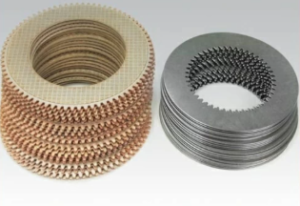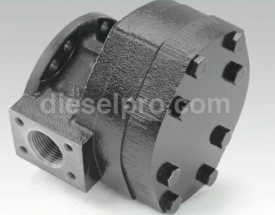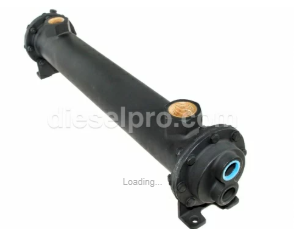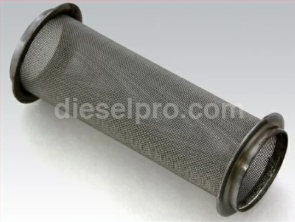
The health of your Twin Disc MG5114A transmission hinges on one thing more than anything else: the condition of its oil. Transmission fluid isn’t just a lubricant—it’s a hydraulic fluid, cooling medium, and friction controller all in one. Dirty or degraded oil can cause slipping, overheating, loss of pressure, and irreversible internal damage.
That’s why routine oil and filter servicing is not just preventive maintenance—it’s a core requirement for anyone who depends on their vessel for daily operations.

Parts Catalog for Twin Disc MG5114A Marine Transmissions
Plate Kit For Twin Disc MG5114A Marine Transmission
Gasket Kits For Twin Disc MG5114A Marine Transmission
This section covers:
- The correct lubricants for your MG5114A
- A step-by-step oil and filter change procedure
- Priming and bleeding the hydraulic system
- Interpreting pressure readings and what they mean
- When to service the oil pump or valve body
Recommended Lubricants and Fluid Specs

Oil Grade: SAE 30 vs SAE 40
Twin Disc marine transmissions like the MG5114A typically use straight-grade mineral oil. The most common choices are:
- SAE 30: Recommended for cooler climates and normal operating ranges. Flows well at startup and still maintains film strength.
- SAE 40: Preferred in tropical climates or high-load commercial operations where oil temperature is consistently high. Offers better shear resistance at elevated temperatures.
Do not use multi-grade engine oil (like 15W-40) unless the OEM has specifically approved it for your unit. Multigrade oils include viscosity modifiers that can shear down under transmission loads and lead to clutch slippage.
Pro Tip: Use SAE 40 if your vessel operates in ambient temps above 85°F (29°C) or runs long hours at high torque.
Brand-Neutral Advice
Stick with brands that meet or exceed API CF/CF-2 or MIL-L-2104C specifications. You don’t need to buy oil from the engine manufacturer; what matters is that the oil has:
- Good anti-foaming properties
- Oxidation resistance
- Thermal stability
- Non-detergent formulation
Look for brands used in heavy-duty off-highway equipment, power transmission systems, or high-output diesel drivetrains. Diesel Pro Power recommends premium non-synthetic monograde oils from well-known commercial brands like Shell, Chevron, or Mobil—but never skip checking the fluid specs.
Operating Temperature Compatibility
Transmission fluid behaves very differently depending on ambient and internal operating temperatures. That’s why choosing the right oil based on where and how your vessel operates is essential.
| Ambient Temp | Recommended Grade | Application |
| Below 40°F (4°C) | SAE 30 | Cold start or seasonal operations |
| 40°F – 85°F (4°C – 29°C) | SAE 30 or 40 | Normal duty |
| Over 85°F (29°C) | SAE 40 | Heavy-load commercial use |
If your transmission oil consistently exceeds 190°F, you may need to upgrade the oil cooler or switch to a heavier oil like SAE 40 to avoid thermal breakdown.
Oil Change Procedure

Draining Old Oil
Begin with a warm transmission, ideally after running the vessel at normal operating load for 20–30 minutes. This ensures the oil has thinned out and contaminants are in suspension.
Steps:
- Shut down the engine and engage transmission in neutral.
- Remove the fill cap or dipstick to allow airflow.
- Place a large drain pan underneath the oil drain plug or suction port.
- Remove the plug carefully—oil may still be hot.
- Allow the oil to drain completely, typically 10–20 minutes.
- Inspect the drain plug magnet for metal shavings or sludge.
For faster draining, some operators use a vacuum pump or oil extractor connected to the dipstick or suction port. Make sure to dispose of the oil properly per marine waste disposal regulations.
Note: The MG5114A typically holds 3 to 5 gallons (11 to 19 liters) of oil, depending on configuration and cooler lines.
Replacing the Oil Filter

The MG5114A will use either:
- A spin-on filter located externally on the housing
- An internal cartridge filter inside a filter bowl
Steps:
- Remove the filter with a proper tool (strap wrench or socket cap).
- Inspect for burnt odor, metal flakes, or fluid discoloration.
- Clean the mating surface with a lint-free rag.
- Install a new OEM-compatible or premium aftermarket filter.
- If spin-on: Lightly oil the gasket before threading.
- If cartridge: Replace O-rings and torque the housing to spec.
- Hand-tighten or use a torque wrench if the manual specifies values.
Always replace the filter when changing oil. Reusing filters risks flow restriction and internal damage.
Filling Procedure and Quantity
After draining and replacing the filter:
- Reinstall the drain plug with a new gasket or thread sealant.
- Begin filling the transmission with clean, filtered oil.
- Use a long-neck funnel or marine-rated pump system to avoid spillage.
- Use a long-neck funnel or marine-rated pump system to avoid spillage.
- Fill slowly to avoid overfilling or bubbling.
- Allow time for oil to settle and check the dipstick after 5–10 minutes.
- Recheck fluid level after running the engine and shifting through all gears.
Never overfill the gear. Too much oil can cause aeration, resulting in pressure loss, clutch slippage, and overheating.
Priming the Hydraulic System
This step is often overlooked but critical. After a full oil change or service, you must ensure oil has reached all parts of the system—especially the clutch packs and oil pump.
- Start the engine and immediately check for oil pressure.
- Shift into forward, neutral, and reverse for 10–15 seconds each.
- Watch for smooth engagement and proper RPM response.
- Shut down and recheck oil level—add if needed.
If your MG5114A has no oil pressure or erratic pressure, do not run the engine. You may need to bleed the system or inspect for blockages.
Hydraulic Pressure Checks
Hydraulic pressure is what makes your MG5114A engage and operate smoothly. Low or high pressure can damage internal components and signal pump or valve problems.
Minimum and Maximum Operating Pressure
Twin Disc marine gears generally operate at:
- 150–250 PSI in neutral
- 200–300 PSI when engaged in forward or reverse
- Pressure should rise quickly and hold steady
These values depend on reduction ratio, oil viscosity, and ambient temperature. Always check your vessel’s spec sheet or test procedures.
How to check:
- Use a 0–500 PSI pressure gauge with a marine-rated hose.
- Connect to the pressure test port on the control valve or housing.
- Start engine and watch gauge as you shift gears.
Signs of proper function:
- Fast rise in pressure (under 1 second) on gear engagement
- Steady needle at idle and load
- Minor drop in neutral is normal
Pressure should not bounce, lag, or stay flat after gear change.
Trouble Signs from Low or High Pressure
Low Pressure (<150 PSI):
- Delayed gear engagement
- Slipping under load
- Overheating transmission
- Gear noise or clutch chatter
Causes:
- Worn oil pump
- Clogged filter or strainer
- Incorrect oil type (too thin)
- Leaking hydraulic circuit
- Valve body issues
High Pressure (>300 PSI):
- Harsh gear engagement
- Seal failure and oil leaks
- Filter housing blowout
- Stress on cooler and hoses
Causes:
- Blocked return line
- Incorrect filter type
- Frozen cooler in cold weather
- Stuck spool in valve body
Never operate outside the normal pressure range. Consistently bad readings mean it’s time for diagnostics.
When to Service the Pump or Valve Body
If pressure is outside spec, you’ll need to identify the source of the issue. Both the oil pump and the hydraulic control valve play roles in pressure management.
Oil Pump Service

The MG5114A uses a gear-driven oil pump, typically mounted inside the housing. Signs of wear:
- Loss of pressure at startup
- Metallic grinding noise
- No oil flow to cooler
- Excessive metal in drain plug
Pump service involves removing the transmission from the vessel. While rare, oil pump failure is catastrophic, and should never be ignored.
Valve Body Service
The control valve manages pressure routing to the clutch packs. Signs of valve trouble:
- Slow or jerky engagement
- No engagement in one direction
- Pressure spikes or drops on gear shift
- Stuck in gear or failure to disengage
Service involves:
- Removing and cleaning the valve body
- Inspecting spools, seals, and springs
- Cleaning all passages with lint-free cloths and solvent
- Replacing O-rings or gaskets
- Reassembling with correct torque and alignment
Do not scratch or nick valve surfaces—this can cause permanent leaks or binding.
Final Tips for Oil and Filter Service
- Always service at the dock, not underway
- Keep spill kits and absorbent mats on hand
- Label the oil change with hours run and date on the filter with a marker
- Track oil usage and topping—excess oil consumption means a leak or internal issue
- Consider oil analysis every 500–1000 hours for fleet vessels
- Store oil indoors and upright, and always check container seals before use

Parts Catalog for Twin Disc MG5114A Marine Transmissions
Plate Kit For Twin Disc MG5114A Marine Transmission
Gasket Kits For Twin Disc MG5114A Marine Transmission
Videos About Twin Disc Transmissions
6 Reasons Your Twin Disc Transmission Has Low Oil Pressure
7 Reasons Your Twin Disc Transmission Is Overheating
3 Reasons Your Clutch Plates in Your Twin Disc Transmission Are Making Excessive Noise
Bull Gear On A Twin Disc Transmission
Rebuilt Twin Disc Transmissions



 Free US Calls: 1-888-433-4735
Free US Calls: 1-888-433-4735 International: 305-545-5588
International: 305-545-5588